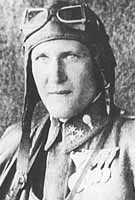
Julius Kowalczik was a Austro-Hungarian World War I flying ace credited with five aerial victories. Though he joined military service as the war began in 1914, he did not transfer to the Austro-Hungarian Aviation Troops until late 1915. Qualified as a fighter pilot in February 1916, he went into action in northern Italy the following month. He would score five aerial victories between 14 October 1916 and 29 June 1917. After surviving being shot down by Italian aces Antonio Amantea and Antonio Riva on 24 August 1917, Kowalczik was reassigned to instructor duty in January 1918. He survived the war, having won two Silver and two Gold Medals for Bravery.

Offizier Franz Lahner (1893-1966) was a Austro-Hungarian World War I flying ace credited with five aerial victories. Later in life, he was a lumber merchant and an officer at the Luftwaffe.
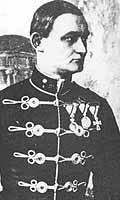
OberleutnantRudolf Szepessy-Sokoll Freiherr von Negyes et Reno was a Hungarian World War I flying ace credited with five aerial victories. He began his military career as a cavalryman as the war began in 1914. After winning the Silver Medal for Bravery and being promoted into the officers' ranks, he transferred to the Austro-Hungarian Aviation Troops in mid-1915 as an aerial observer. On 14 February 1916, while participating in a historic strategic bombing raid on Milan, he scored his first aerial victory. After shooting down another airplane and an observation balloon, Szepessy-Sokoll was transferred to a fighter unit after pilot training. After shooting down a pair of Macchi L.3s on 5 November 1917, he was killed in action the next day.

FeldwebelKarl Teichmann (1897–1927) was a Austro-Hungarian World War I flying ace credited with five aerial victories. His path to aerial victories began in 1915, when he joined the Austro-Hungarian infantry. His prewar training as an auto mechanic saw him assigned as an aviation mechanic on the Russian Front in February 1916. After eight months, he began pilot training, being awarded Austrian Pilot's Certificate 658 on 16 May 1917. Reassigned to the Italian Front, he scored five victories—three shared—between 26 September 1917 and 22 August 1918. Teichmann would survive the war and die of natural causes in Graz, Austria.

Karl Urban was an Austro-Hungarian World War I flying ace credited with five aerial victories.
Franz Wognar (1890-1943) was an Austrian-Hungarian World War I flying ace credited with five aerial victories. Wognar joined the Austro-Hungarian Armed Forces in 1913 as a trained mechanic. As the war broke out in 1914, he transferred to the Austro-Hungarian Aviation Troops. After pilot training, he was posted to fly two-seater reconnaissance aircraft over the early Battles of the Isonzo in northern Italy. Wognar flew reconnaissance, aerial photo, and artillery direction missions throughout 1916. Between 26 January and 16 September 1917, Wognar would score five victories. His fifth victory, over an Italian observation balloon, was extraordinary because very few pilots succeeded in balloon busting with a two-seater plane. Wognar was reassigned to test pilot duty. He ended the war with one Gold and four Silver awards of the Medal for Bravery.

Johann Frint was an Austro-Hungarian flying ace during World War I and professional soldier credited with six aerial victories while flying as an aerial observer. Crippled as an infantry officer in November 1914, Frint volunteered for the Austro-Hungarian Aviation Troops. He scored his victories on the Italian Front from the rear seat of two-seater reconnaissance aircraft with a variety of pilots, including a triple victory while being flown by his commanding officer, Heinrich Kostrba. Rewarded with the Order of the Iron Crown and Military Merit Medal, Frint became a mediocre pilot. He was entrusted with successive commands of a number of squadrons before dying in an airplane crash in 1918.
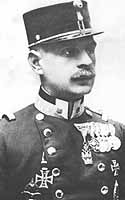
Hauptmann Karl Nikitsch was a professional soldier who served, in succession, the Austro-Hungarian Empire and the First Austrian Republic. His First World War service in the Austro-Hungarian Imperial and Royal Aviation Troops was marked by his abilities in organizing, staffing, and commanding flying squadrons. He also became a flying ace credited with six aerial victories Postwar, he commanded the Austrian Flugpolizei.
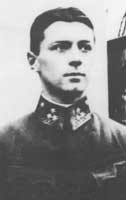
Franz Peter was an Austrian flying ace credited with six aerial victories in World War I while flying for Austria-Hungary's Imperial and Royal Aviation Troops.
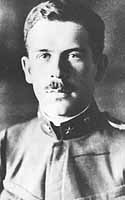
Oberleutnant Josef Pürer (1894-1918) was an Austro-Hungarian World War I flying ace credited with six aerial victories. A volunteer for the artillery when the war began, he fought for two years on the Russian Front. He was commissioned as an officer on 1 January 1916; later that year he transferred to the Austro-Hungarian Aviation Troops. He served as an aerial observer in northern Italy until early 1918. After scoring six aerial victories, he was trained as a fighter pilot by 11 July 1918. He was killed in action by Sidney Cottle on 31 August 1918.

OberleutnantLudwig Hautzmayer (1893-1936) was an Austro-Hungarian World War I flying ace credited with seven aerial victories. He was a prewar reserve infantry officer; when war broke out, he fought until suffering a severe leg wound on 8 September 1914. When recovered, he transferred to the Austro-Hungarian Aviation Troops as an aerial observer in March, 1915. After 40 combat missions on the Eastern Front, he underwent fighter pilot training. Once qualified, he was posted to the Isonzo Front, where he became an ace. Appointed commander of his own fighter squadron, Flik 61J, he was one of the few reserve officers so entrusted as a leader. After scoring two more victories, he ended the war with multiple decorations, up to the Order of Leopold. Postwar, he flew as an airline pilot for Malert until killed in a crash at Croydon, England on 9 December 1936.

OberleutnantOtto Jäger was an Austro-Hungarian World War I flying ace credited with seven aerial victories. He entered the war in 1914 as an infantry officer. By mid-1915, he had suffered three serious wounds fighting on the Russian Front, winning the Military Merit Medal, Silver Medal for Bravery, and the German War Service Medal. Invalided from front line service to training duties, Jäger trained as an aerial observer. Posted back to the Russian Front to fly with Fliegerkompanie 10 in early 1916, Jäger scored his fifth victory on 2 August 1916. He was awarded the Silver Military Merit Medal, the Military Merit Cross, and the German Iron Cross Second Class.
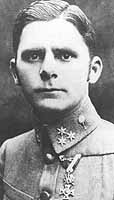
Hauptmann Josef von Maier was an Austro-Hungarian World War I flying ace credited with seven aerial victories. József Modory

OberleutnantAlexander Tahy was a Hungarian World War I flying ace credited with eight aerial victories while serving with the Austro-Hungarian Aviation Troops. He began the war as an artilleryman, winning the Silver Medal for Bravery in May 1915. In early 1916, he transferred to aviation duty as an aerial observer. Between 3 December 1916 and 26 June 1917, he was credited with five aerial victories for Fliegerkompanie 19, earning another three decorations. Having taught himself to fly, he transferred to a fighter unit, Fliegerkompanie 51J for his last three victories. On 7 March 1918, Tahy died in a flying accident. His greatest honor came after his death, when he was awarded the Knight's Cross of the Order of Leopold with War Decorations and Swords.

Károly Kaszala was an Austro-Hungarian World War I flying ace credited with eight aerial victories, thus winning his nation's highest honor, the Gold Medal for Bravery. Joining the military in 1914, he volunteered for aviation duty after recruit training. After pilot's training, he was posted to Fliegerkompanie 14, where he refused to fly his assigned aircraft. He was transferred for his insubordination; as he gained experience in his new unit, he and his observers managed to score three aerial victories from his reconnaissance two-seater. He was then upgraded to single-seat fighters, winning four more victories by the end of 1917. He was then posted to test pilot duties until war's end. In addition to the Gold Medal for Bravery, he had won three Silver Medals for Bravery and a German Iron Cross.
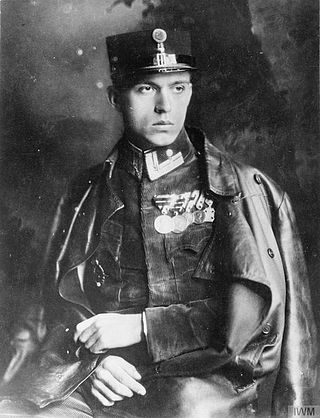
Lieutenant József Kiss de Elemér et Ittebe was a World War I flying ace for the Austro-Hungarian Empire. He was credited with 19 aerial victories. He was the most successful Hungarian ace in the war.
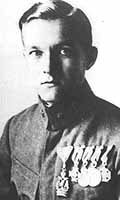
Oberleutnant Franz Rudorfer (1897-1919) was an Austro-Hungarian World War I flying ace credited with eleven confirmed and two unconfirmed aerial victories.
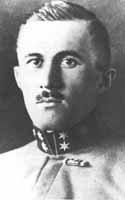
Oberleutnant Ernst Strohschneider was an Austro-Hungarian flying ace during World War I. He was credited with 15 confirmed aerial victories during his rise to the simultaneous command of two fighter squadrons. He died in a flying accident on 21 March 1918.
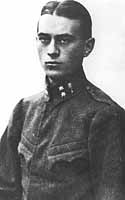
Stabsfeldwebel Ferdinand Udvardy was a Hungarian conscript into the military of the Austro-Hungarian Empire who became a flying ace credited with nine aerial victories. Upon the dissolution of Austria-Hungary, Udvardy became a Hungarian citizen, and in the aftermath of World War I, defended his new nation against invasion.


















